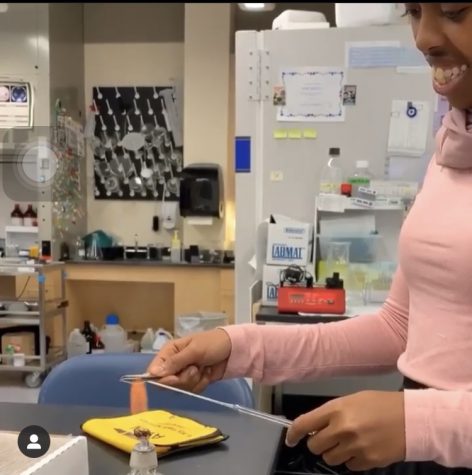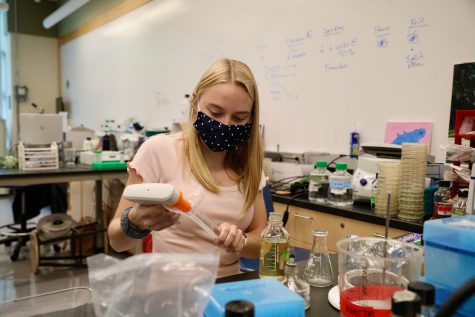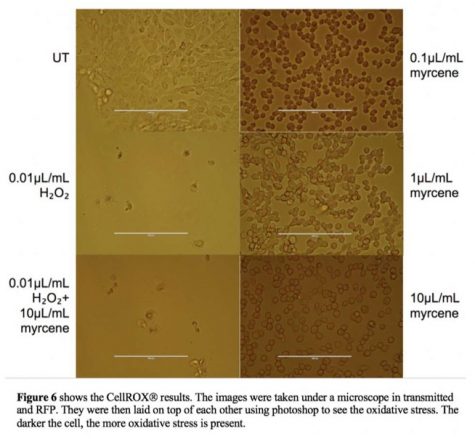Regeneron Science Talent Search Submissions
November 19, 2020
Four students in Berkshire’s Advanced Math/Science Research Program students just submitted their projects to the REGENERON Science Talent Search, the “nation’s oldest and most prestigious science and mathematics competition” (Society for Science). Each student has been working on their project for two years with Dr. April Burch, and this submission is a culmination of all of that hard work. The application consisted of a 20-page paper, short answer questions, the applicant’s test scores and classes, and more, including a “layperson’s summary” describing the project in simple terms. The summary for each applicant is below.
Hamda Hussein
The entire world is waiting for a vaccine for COVID-19. My research project was to develop a small particle composed of fat molecules(lipids) that contained peptide fragments from Eastern Equine Encephalitis virus. EEE virus is a mosquito-borne virus that causes fatal infections and there is no vaccine developed for it yet. Mosquitoes infected with EEEV spread the virus through bites, infecting a vast range of animals including humans. After an infected mosquito bite, immune reactive glycoproteins, E1 and E2, contained in the EEE virus particle, attach themselves to the host cell. In this research, the most antigenic regions of the virus were targeted, the surface of E1 and E2 – the part of the virus that gets exposed to a cell first. I did experiments where I engineered a synthetic peptide fragment that had a DNA sequence of the most antigenic areas of the virus particle to develop the induction of highly targeted immune responses. Lipid molecules were used to carry, store, protect and deliver the peptide fragment to targeted cells to evoke immune responses.

Megan Mokriski
The world’s struggle with COVID-19 has revealed how little we actually know about viruses and how to prevent their spread. In my project, I hoped to unravel more information about how viruses work, specifically how DNA can serve more than one function based on its patterns. Like how certain notes can come together to create a harmony in music, the overall sequence of the DNA is made up of different notes, or nucleotides, and a sequence the nucleotides in the virus I worked with followed a harmonic pattern. To figure why this pattern was important, those patterns were changed, which made it hard for the virus to survive at lower temperatures and forced it to evolve. Just as mutations arise in animals and the best of those survive, viruses can mutate too. Since it doesn’t take long to create many generations, there are many opportunities for the virus to change. Over the course of 10 generations, my virus got better at surviving at cold temperatures, so it had to be evolving. The virus adjusted by creating a more stable shell to hold the DNA, which had been breaking through the shell without the harmonic patterns to make it more flexible.

Devan Andreski
Oxidative stress is the result of a chemical imbalance of antioxidants in cells. In thyroid cancer cells, there has been evidence that the buildup of Nrf2 in the cell caused by the pathway activation results in treatment resistance. In this research, myrcene, an organic compound categorized as a terpene, was studied on thyroid cancer cells. Specifically, it was examined for its potential impact on the Keap1/Nrf2 signaling pathway which is activated under oxidative stress. To study this, three experiments were conducted; the first was Trypan Blue, which makes the dead cells differ from the alive cells. The second experiment conducted was the Western Blot; this detected the levels of Nrf2 in each treatment. The final experiment was CellROX®️ which was used to detect oxidative stress. Myrcene ended up not decreasing the levels of Nrf2 in the cell, however, higher doses of myrcene proved to reduce oxidative stress. This proves that myrcene has an antioxidant potential in thyroid cancer cells.

Ava Block
Herpes simplex virus one, HSV-1, is a virus that causes oxidative stress during infection. Preliminary data suggests that Nrf2, a transcriptional activator that combats oxidative stress, is stable during HSV-1 infection. I designed a plasmid-based approach to investigate the role of Nrf2, and whether it can bind to parts of the HSV-1 viral genome during infection. I hope to determine whether redox-regulated transcription factors are utilized for HSV-1 gene expression. A deeper understanding of virus-induced oxidative stress will lead to alternative strategies to limit tissue destruction caused by oxidative insults during HSV-1 infection.

